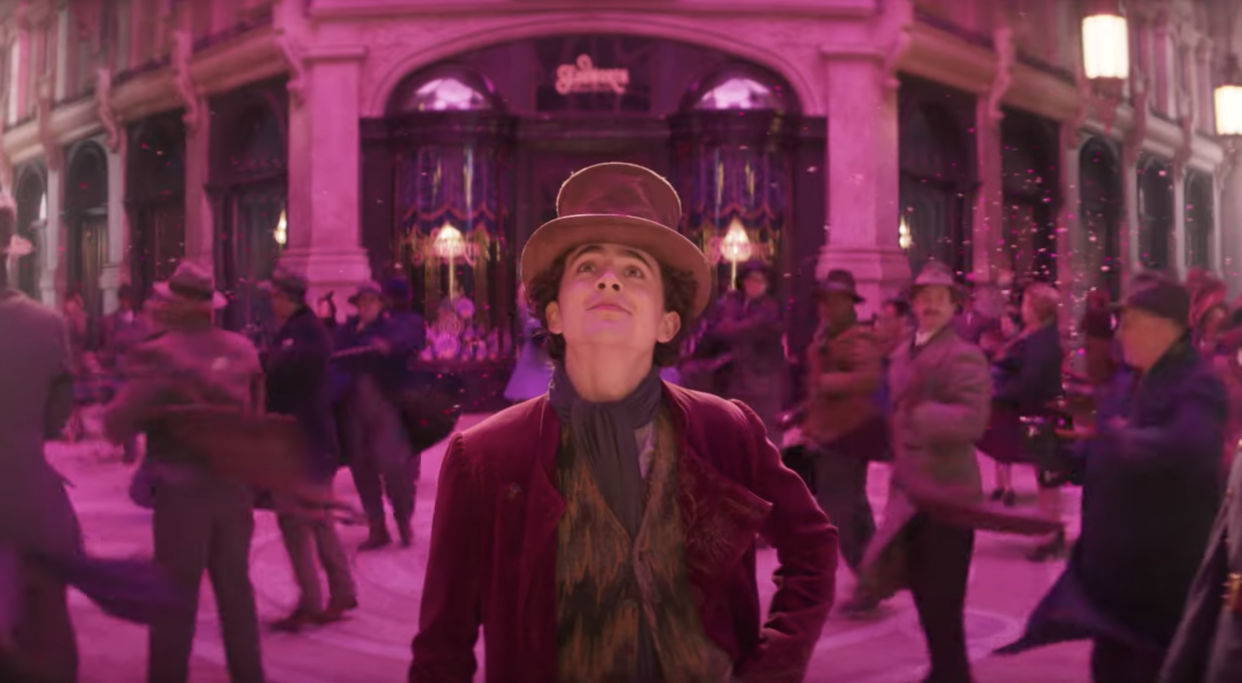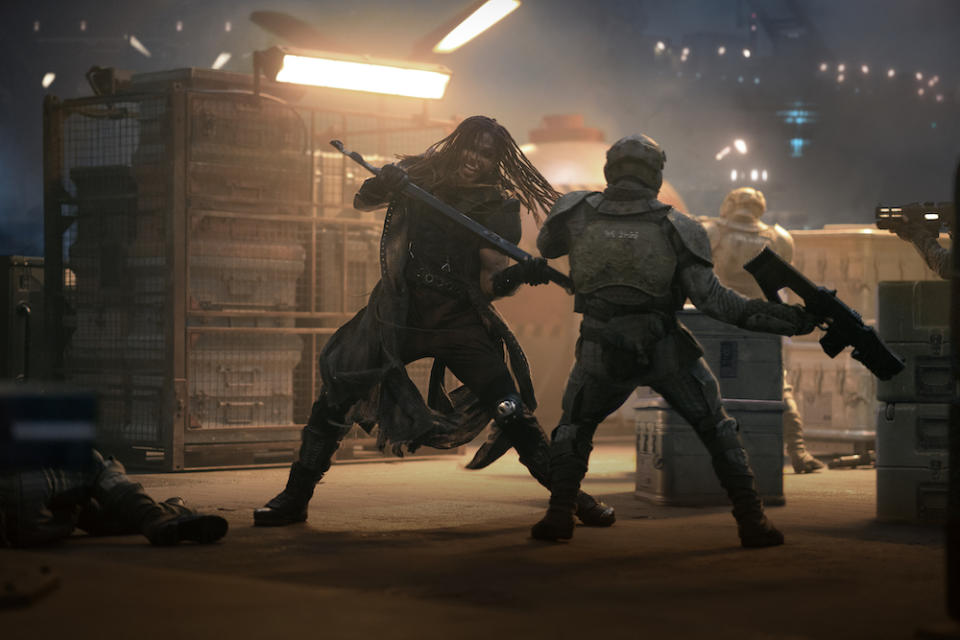Without ‘Dune: Part Two,’ the VFX Oscar Race Lacks Its Late-Season Juggernaut — What Next?

- Oops!Something went wrong.Please try again later.
The last two VFX Oscar winners — “Avatar: The Way of Water” and “Dune” — were late-season juggernauts. The same was anticipated for “Dune: Part Two” (originally scheduled for a November 3 release). But since Warner Bros. pushed back Denis Villeneuve’s sci-fi epic to March 15, 2024, because of the WGA and SAG-AFTRA strikes, that opens up a void.
Now, the spotlight is on other Oscar hopefuls that would’ve been overshadowed: “Wonka” (December 15, Warner Bros.), “The Marvels” (November 10, Marvel/Disney), “Napoleon” (November 22, Apple TV+/Sony Pictures), “Poor Things” (December 8, Searchlight), and “Rebel Moon —Part One: A Child of Fire” (December 22, Netflix).
More from IndieWire
Director Paul King (“Paddington”) transforms “Wonka” into the origin story of Roald Dahl’s famed chocolatier (with “Dune” star Timothée Chalamet in the title role), which now becomes the most prestigious late-season VFX contender. It’s a musical companion piece to the 1971 film “Willy Wonka & the Chocolate Factory,” with Wonka struggling to start his own chocolate shop with his magic touch and secret weapon: Hugh Grant’s Oompa Loompa.
It appears to take place in the ’30s and has a definite “Harry Potter” vibe. The VFX from Framestore evokes a sense of the magical for Wonka’s experimental inventions and secret ingredients, including his candy’s ability to make people float. Its most complex work was shrinking Grant down to a miniscule size as a fully CG character; a very advanced facial animation setup was used instead of any deep fake trickery. Other effects included creating gallons of practical and digital chocolate as well as providing a digital giraffe, flamingos, crowds, and fantastical environments. The film looks nostalgically charming, but it’s hard to predict how much of a serious Oscar contender it will be.
“The Marvels,” the sequel to “Captain Marvel,” finds Brie Larson’s superhero teaming up with Teyona Parris’ “WandaVision” character, Monica Rambeau, and Kamala Khan (Iman Vellani) from “Ms. Marvel” to stop a wormhole linked to the Kree. Judging from the trailer, the VFX leans heavily into trippy CG with lots of characters and refracted light effects from ILM, Wētā FX, Rise FX, Rising Sun Pictures, and Sony Pictures Imageworks. Marvel, much maligned for its VFX and now unionized, has a much better shot at a nomination with “Guardians of the Galaxy Vol. 3.”

Ridley Scott’s “Napoleon,” which has Napoleon Bonaparte (Joaquin Phoenix) fighting wars abroad and at home with Empress Joséphine (Vanessa Kirby), offers six legendary battles (each with their own geometric pattern), with VFX from MPC, ILM, and half a dozen other companies.
Lorgos Lanthimos’ “Poor Things” is a subversive “Frankenstein” gender-bender, starring Emma Stone as a re-animated Victorian free spirit. It touts plenty of retro-looking VFX (Union VFX and Absolute Post), from painted backdrops to rear screen projection to LED screens for the cruise ship sea and sky.
“Rebel Moon,” Zack Snyder’s sci-fi space opera about a colony on the edge of a galaxy at war with a tyrannical ruling force, began as a “Star Wars” pitch with future-retro nods to Akira Kurosawa and “Heavy Metal” magazine. The CG characters include a hybrid human/spider creature and a mechanical knight (voiced by Anthony Hopkins). The VFX is from half a dozen companies, led by Framestore and Wētā.
However, it’s come down to an Oscar race between Gareth Edwards’ AI sci-fi thriller “The Creator” (20th Century/Disney) and Christopher Nolan’s “Oppenheimer” (Universal). Edwards offers a streamlined paradigm shift with his gritty indie/blockbuster hybrid, shooting the film in 80 locations in Southeast Asia with the lightweight Sony FX3 prouse camera and then reverse-engineering the naturalistic VFX from ILM in post. The result was an $80 million film that looked like $200 million. The film offers imaginative robots with an ’80s Sony/Nintendo vibe (especially simulants that resemble humans). ILM placed the CG parts over the actors while retaining their performances, and helped design and create the set extensions.
For “Oppenheimer,” Oscar-winning production VFX supervisor Andrew Jackson (“Tenet”) collaborated closely with Oscar-winning SFX supervisor Scott Fisher (“Tenet,” “Interstellar”) to shoot lab experiments in aquarium tanks for the simulated liquids and other materials during the quantum physics sequences. Everything was shot in camera (including 65mm IMAX) and then manipulated, layered, and composited in the computer. Same for the atomic blast, which was a series of large and small practical explosions treated and composited in the computer. Although this would be considered supporting VFX, there’s not a single shot derived from CG simulation. The work serves as a stunning old-school approach to the current CG fatigue and could very well win the Oscar.
Best of IndieWire
2023 Emmy Predictions: Who Will Win at the Primetime Emmy Awards?
2023 Emmy Predictions: Outstanding Documentary or Nonfiction Special
2023 Emmy Predictions: Outstanding Documentary or Nonfiction Series
Sign up for Indiewire's Newsletter. For the latest news, follow us on Facebook, Twitter, and Instagram.

